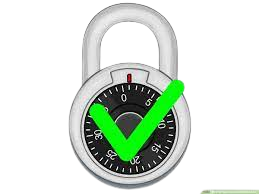https://play.irepel.com/
How To Unblock All Websites On A School Chromebook 2023
As schools become more reliant on technology for learning, many students find themselves restricted by the online resources available to them. Most schools have implemented filters on their internet connections to prevent students from accessing certain websites that they deem inappropriate or distracting. Unfortunately, these restrictions can sometimes hinder learning, especially when it comes to research or online collaboration.
If you're a student who's struggling with accessing blocked websites on your school-issued Chromebook, don't worry. In this article, we'll guide you through some simple steps on how to unblock all websites on a school Chromebook in 2023.
Use a VPN service
A Virtual Private Network (VPN) is a secure and private connection that allows you to access the internet through a different server than your own. By using a VPN service, you can bypass the restrictions put in place by your school's internet filters and access blocked websites.
To use a VPN on your school Chromebook, you'll need to install a VPN app or extension. There are many free and paid VPN services available online, but be sure to choose a reputable one to ensure your privacy and security. Once you've installed the VPN, simply connect to a server outside of your school's network, and you should be able to access all websites without restrictions.
Use a Proxy Server
Another option for accessing blocked websites on a school Chromebook is to use a proxy server. A proxy server acts as an intermediary between your device and the internet, allowing you to access websites that may be blocked by your school's filters.
To use a proxy server, you'll need to find a reputable proxy website and enter the URL of the website you want to access. The proxy server will then fetch the website on your behalf and display it to you. Keep in mind that using a proxy server may slow down your internet connection, and it may not be as secure as using a VPN.
Change DNS settings
Domain Name System (DNS) servers translate web addresses into IP addresses that your device can connect to. If your school's internet filters are blocking specific DNS servers, you can try changing the DNS settings on your Chromebook to access blocked websites.
To change your DNS settings on a Chromebook, go to Settings > Wi-Fi > Network name > Edit > DNS > Custom. Enter a public DNS server address, such as Google's DNS server (8.8.8.8 or 8.8.4.4), and save your changes. This should allow you to bypass your school's DNS filters and access blocked websites.
Use a Chrome extension
There are several Chrome extensions available that can help you access blocked websites on a school Chromebook. Extensions like Hola, ZenMate, and Browsec allow you to bypass internet filters and access websites that may be blocked by your school.
To use a Chrome extension, simply download and install it from the Chrome Web Store. Once the extension is installed, activate it by clicking on its icon in your Chrome browser. You should then be able to access all websites without restrictions.
In conclusion, accessing blocked websites on a school Chromebook can be a frustrating experience, but there are several options available to help you bypass internet filters. By using a VPN service, proxy server, changing DNS settings, or a Chrome extension, you can access all websites and resources you need to succeed in your studies. Just be sure to use these methods responsibly and follow your school's internet use policies.
Chromebook, school, internet filters, VPN, Proxy Server, DNS settings, Chrome extensions, blocked websites.





0 Comments